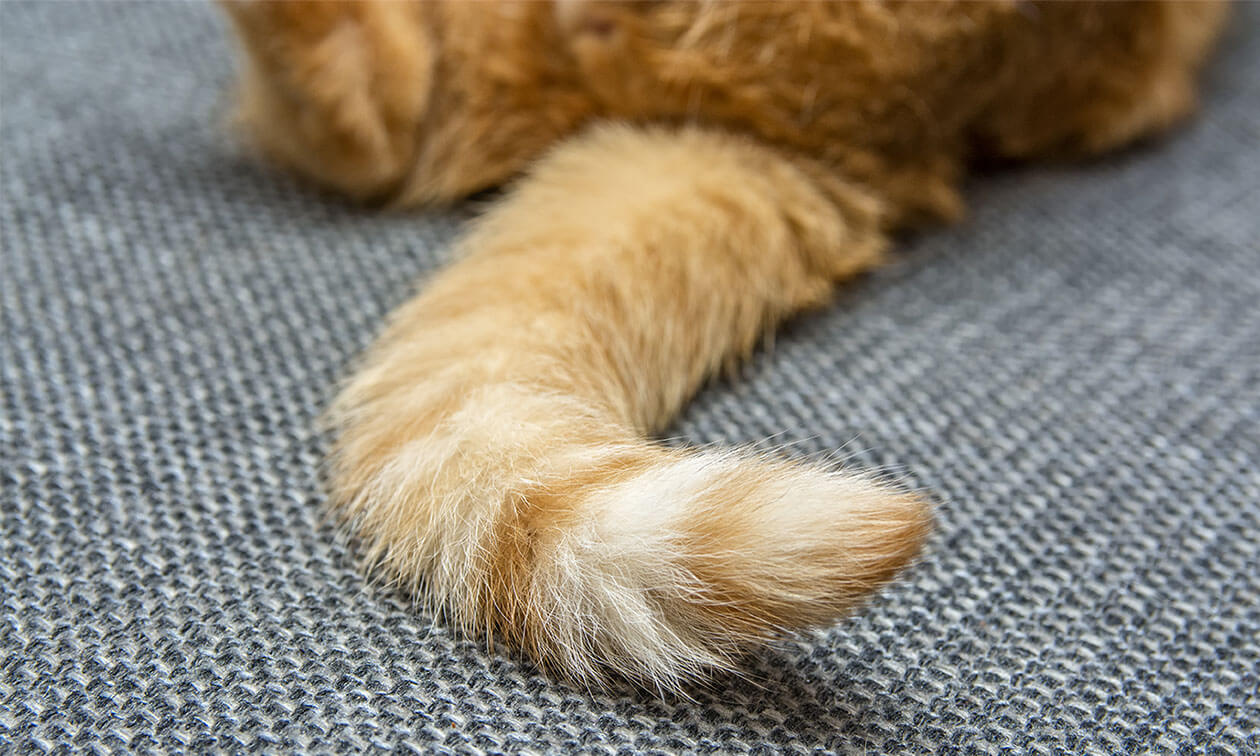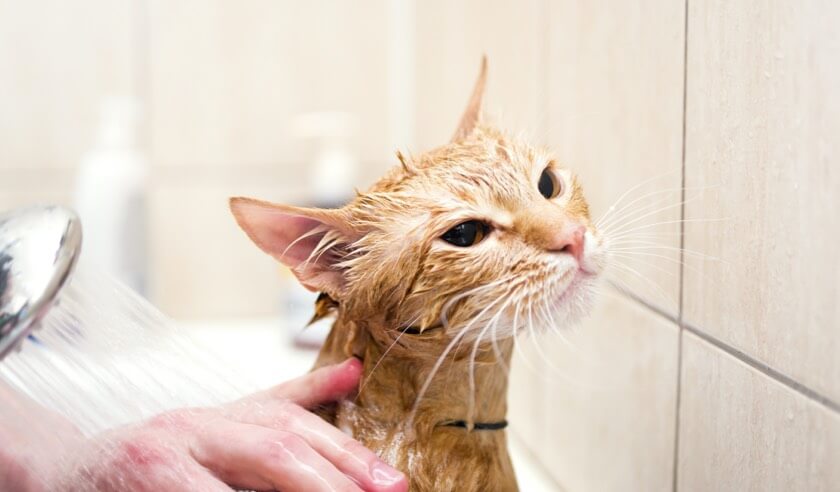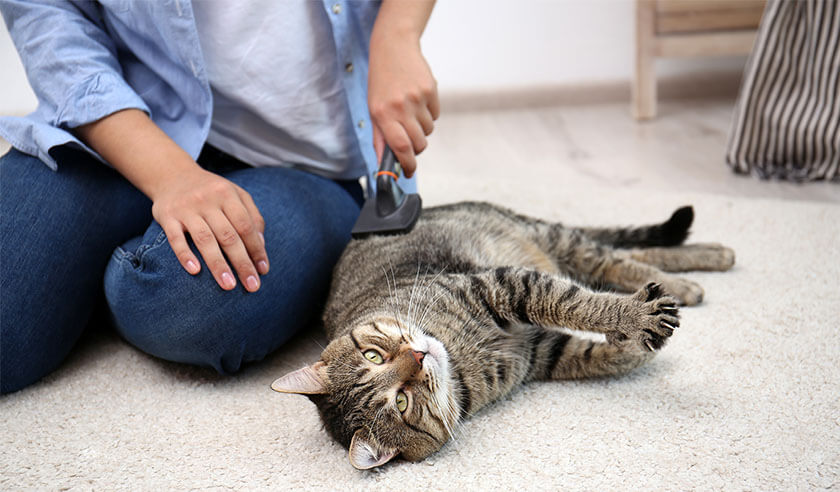Have you noticed an oily spot, and maybe swelling, near the base of your cat’s tail? This is called “stud tail”, and it has to do with oil glands in the tail that aren’t functioning as they should. it’s important to recognize the signs of stud tail and know a bit about it so you can minimize your cat’s discomfort and the possibility of secondary infection. You should ask your veterinarian about stud tail if you think your cat has it.
Understanding Stud Tail
Your cat’s largest organ is their skin, and though we can’t see all its layers and features, it has many different functions.
One feature of skin is oil glands, present in large numbers on the face, paws, back of the neck, rump, chin, and tail region. These oil glands, also called sebaceous glands, produce an oily substance called sebum. Sebum waterproofs the hair giving it a sheen, keeping the skin soft, and providing antimicrobial properties. The oil glands are also part of a cat’s scent marking as they rub on things to deposit that scent.
The oil glands near the tail are typically larger than others, so changes in those glands are more evident. When the glands become enlarged and overactive, they compress the hair follicles and produce too much sebum. This causes hair loss, greasy fur, and scaly skin near the base of the tail. It’s called stud tail or tail gland hyperplasia.
The term “stud tail” comes from this condition occurring most commonly with intact male cats, but any cat, male or female, spayed or neutered, can develop it.
Why Cats Get Stud Tail
Stud tail is most often caused by an excess of androgen sex hormones, such as testosterone. This is why the condition is most often seen in intact male cats.
Stud tail can also be caused by poor grooming habits. Cats may fail to groom properly due to obesity, orthopedic or mobility issues, stress, or underlying medical issues. Many times, it is unknown what causes a cat to get stud tail.
A less common cause of stud tail is seborrhea. This generalized skin condition occurs when the skin produces an excess of sebum. It’s often genetic or a secondary issue due to allergic skin disease, parasites, hormonal imbalances, or skin infections caused by yeast or bacteria.
Signs of Stud Tail in Cats
The symptoms of stud tail are easy to spot. They may include:
- Hair loss near the base of the tail
- Greasy fur at the base of the tail
- A yellow look to light-colored fur
- Scaly or crusty skin
- Comedones (blackheads) on the skin
- Darkly pigmented skin (hyperpigmentation)
Since secondary infections can happen with stud tail, you may notice additional symptoms such as:
- Discomfort
- Redness or swelling of the skin around the tail
- Discharge from the skin
- Your cat chewing or rubbing the area to relieve itching
- Wounds from self-trauma, like chewing and scratching too hard
Cat Stud Tail Treatment
The severity of the case determines what treatment is needed for stud tail. Treatment may not be needed for very mild cases if the primary symptom is just a small bald spot, but it should still be examined by a veterinarian.
Treatment can be challenging with some cases. Antimicrobial shampoos formulated to remove grease and topical medications, such as benzoyl peroxide or salicylic acid, usually do the trick.
If your cat develops a secondary bacterial infection, they may need antibiotics and anti-inflammatory medications. This can happen because the hair follicles and skin become compromised from the stud tail. It’s also possible if your cat is overgrooming to try and relieve the itching. The skin becomes susceptible to bacterial infections.
If your cat is doing damage to themselves by scratching or biting at the area, an Elizabethan collar (cone) may be necessary until things clear up. In rare cases, the tail may need to be amputated.
In some cases, clipping the hair will help the shampoo and topical medications have better contact with the skin. This is especially true if your cat has developed matted fur, which can be extremely uncomfortable and thoroughly cover the area the medication needs to reach.
Preventing Stud Tail in Your Cat
Since androgen sex hormones can be the cause, neutering a cat may help prevent stud tail or slow the progression of the condition. However, neutering does not guarantee your cat won’t have stud tail at some point in their life. Otherwise, there is not too much you can do to prevent stud tail.
If your cat is predisposed to orthopedic issues or has mobility issues that can limit their ability to groom, consult your veterinarian about supplements or medication to manage inflammation and pain. You can also groom your cat yourself using a soft washcloth and warm water, cat grooming wipes, or dry shampoos. Always use an unscented option and consider a sensitive skin formulation. Most cats don’t need full baths except in extreme conditions.
Since stress can be a factor in reduced grooming, provide a lot of mental enrichment, exercise, and a stress-free environment to encourage your cat to groom normally.
Have your cat routinely evaluated by a veterinarian for potential underlying medical issues that can cause poor grooming or seborrhea.
ZPC-03293





